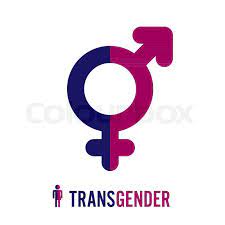Medical transition is a significant aspect of the journey for many transgender individuals seeking to align their physical bodies with their gender identity. This process can encompass a variety of medical interventions, including hormone therapy and surgical options, as well as mental health support and legal changes. While each person’s experience is unique, understanding the key components of medical transition can provide invaluable insight into this deeply personal journey.
In this article, we’ll explore the various elements of medical transition for transgender people, including the steps involved, the role of hormone therapy and surgery, mental health considerations, financial implications, and the legal processes of changing one’s name and gender marker. Along the way, we’ll also share real stories of individuals who have navigated this path, highlighting the diversity of experiences within the transgender community.Spironolactone Mtf EffectsDoes Testosterone Make You Grow A Pp Ftm
What Is Medical Transition for Transgender People?
Medical transition refers to the process through which transgender individuals seek to align their physical bodies with their gender identity through medical interventions. This may include hormone therapy, surgeries, and other medical procedures aimed at addressing gender dysphoria—the psychological distress caused by a discrepancy between one’s assigned sex at birth and their affirmed gender identity. It is important to note that not all transgender individuals choose to undergo medical transition, and the steps taken depend entirely on personal preferences and needs.
The concept of medical transition is often misunderstood, with some believing it to be a linear process confined to surgery and hormones. However, medical transition is highly individualistic. Some may opt for hormone therapy but may not pursue surgeries, while others may take a different path altogether. The key takeaway is that medical transition is not a one-size-fits-all approach and should be tailored to each individual’s needs and circumstances.
Common Steps in the Medical Transition Process Explained
The medical transition process typically begins with a thorough assessment by mental health professionals who specialize in gender identity issues. This step is crucial in ensuring that individuals are informed about their options and prepared for the changes they may undergo. Many professionals follow the World Professional Association for Transgender Health (WPATH) guidelines, which recommend that individuals engage in counseling or therapy before starting hormone therapy or surgical interventions.
Once a person has received mental health support, they may choose to begin hormone therapy, which is often seen as the first significant medical step in transitioning. The process may also include consultations with endocrinologists and surgeons, depending on the individual’s goals. Additionally, ongoing support from healthcare providers, friends, and family can play a vital role in a person’s transition journey.
Hormone Therapy: How It Works and What to Expect
Hormone therapy (HT) is one of the most common components of medical transition for transgender individuals. For those assigned female at birth (AFAB) transitioning to male, testosterone is typically prescribed. This hormone can promote physical changes such as increased muscle mass, body hair growth, and voice deepening. For those assigned male at birth (AMAB) transitioning to female, estrogen and anti-androgens are often used to develop breast tissue and redistribute body fat.
While hormone therapy can bring about significant physical changes, it’s crucial to set realistic expectations. Some changes occur relatively quickly, while others may take months or even years. Individuals undergoing hormone therapy should also anticipate potential emotional adjustments, as hormonal fluctuations can impact mood and mental well-being. Regular check-ins with healthcare providers can help ensure that the process is monitored effectively and any concerns are addressed promptly.
The Role of Surgery in Transgender Medical Transition
Surgery can be a vital part of medical transition for many transgender individuals. Common surgical options include chest masculinization (top surgery) for trans men and breast augmentation for trans women. Additionally, gender-affirming surgeries like vaginoplasty and phalloplasty are available for individuals seeking to alter their genitalia to align with their gender identity.
However, surgery is not a requirement for everyone, and the decision to undergo surgical procedures is deeply personal. Some individuals may choose to have surgeries, while others may feel satisfied with hormone therapy alone. It’s essential to take the time to research and consider the implications of surgical procedures, including recovery time, risks, and long-term outcomes, to make an informed decision that aligns with one’s identity and life goals.
Navigating the Mental Health Aspects of Transitioning
Transitioning is a complex emotional journey that can bring about feelings of joy, relief, and newfound authenticity, but it can also be coupled with challenges like anxiety, depression, and social pressures. As such, mental health support is a vital component of the medical transition process. Many individuals benefit from regular counseling, support groups, or therapy sessions that focus on issues related to gender identity and the transition experience.
In addition, mental health professionals can assist in navigating feelings of dysphoria, societal expectations, and relationships with family and friends. Building a support network of understanding individuals, whether they are friends, family, or fellow trans individuals, can be immensely beneficial during this time. A strong support system can help mitigate stress and foster resilience as one embarks on their transition journey.
Insurance and Financial Considerations for Medical Transition
Navigating the financial aspects of medical transition can be daunting for many transgender individuals. Insurance coverage for hormone therapy, surgeries, and mental health services varies significantly by provider and geographic location. Some insurance plans cover a range of transition-related expenses, while others may exclude them altogether. It’s advisable for individuals to carefully review their insurance policies, consult their healthcare providers, and advocate for coverage if possible.
For those without insurance or with limited coverage, there may be financial assistance programs or sliding scale clinics that can help offset the costs associated with medical transition. Understanding the potential expenses—including consultations, medications, surgeries, and ongoing healthcare—can help individuals budget effectively. It’s also worth exploring community resources and local organizations that may provide support or funding for transgender individuals undergoing transition.
Legal Aspects: Changing Your Name and Gender Marker
Alongside medical transition, many transgender individuals seek to legally change their name and gender marker on identification documents. This process can vary significantly from state to state and often entails filling out specific forms, paying fees, and sometimes attending a court hearing. Individuals are encouraged to research their local laws and regulations governing name and gender marker changes to understand the required steps and documentation.
Changing one’s name and gender marker can be an empowering aspect of the transition process, allowing individuals to have identification that aligns with their true selves. It’s a significant step in affirming one’s identity in both personal and professional contexts. However, navigating the legal landscape can be complex, so seeking guidance from legal professionals or local LGBTQ+ organizations can be beneficial.
Real Stories: Experiences of Trans Individuals Transitioning
Hearing firsthand accounts from transgender individuals can provide valuable insights into the medical transition experience. For example, one individual may share their journey of transitioning in a supportive environment, highlighting the positive impact of hormone therapy and surgery on their mental well-being. They might describe how the changes made them feel more confident and aligned with their identity, showcasing the transformative power of medical transition.
On the other hand, another person might recount their challenges while transitioning, such as facing discrimination or navigating complex healthcare systems. Their story could emphasize the importance of perseverance and the need for a strong support system. Real narratives from individuals can foster understanding and empathy, shedding light on the diverse experiences within the transgender community and the various paths one may take in their journey.
Medical transition is a deeply personal journey shaped by individual identities, experiences, and choices. Whether it’s through hormone therapy, surgery, mental health support, or legal changes, the process is as unique as each person navigating it. Understanding the steps, challenges, and triumphs involved in medical transition can help foster empathy and support for those on this path.
As society continues to grow in its understanding of gender identity and expression, it’s essential to create safe and supportive environments for transgender individuals. By sharing stories, advocating for better healthcare access, and upholding the rights of trans individuals, we can contribute to a more inclusive world where everyone is empowered to live authentically.


